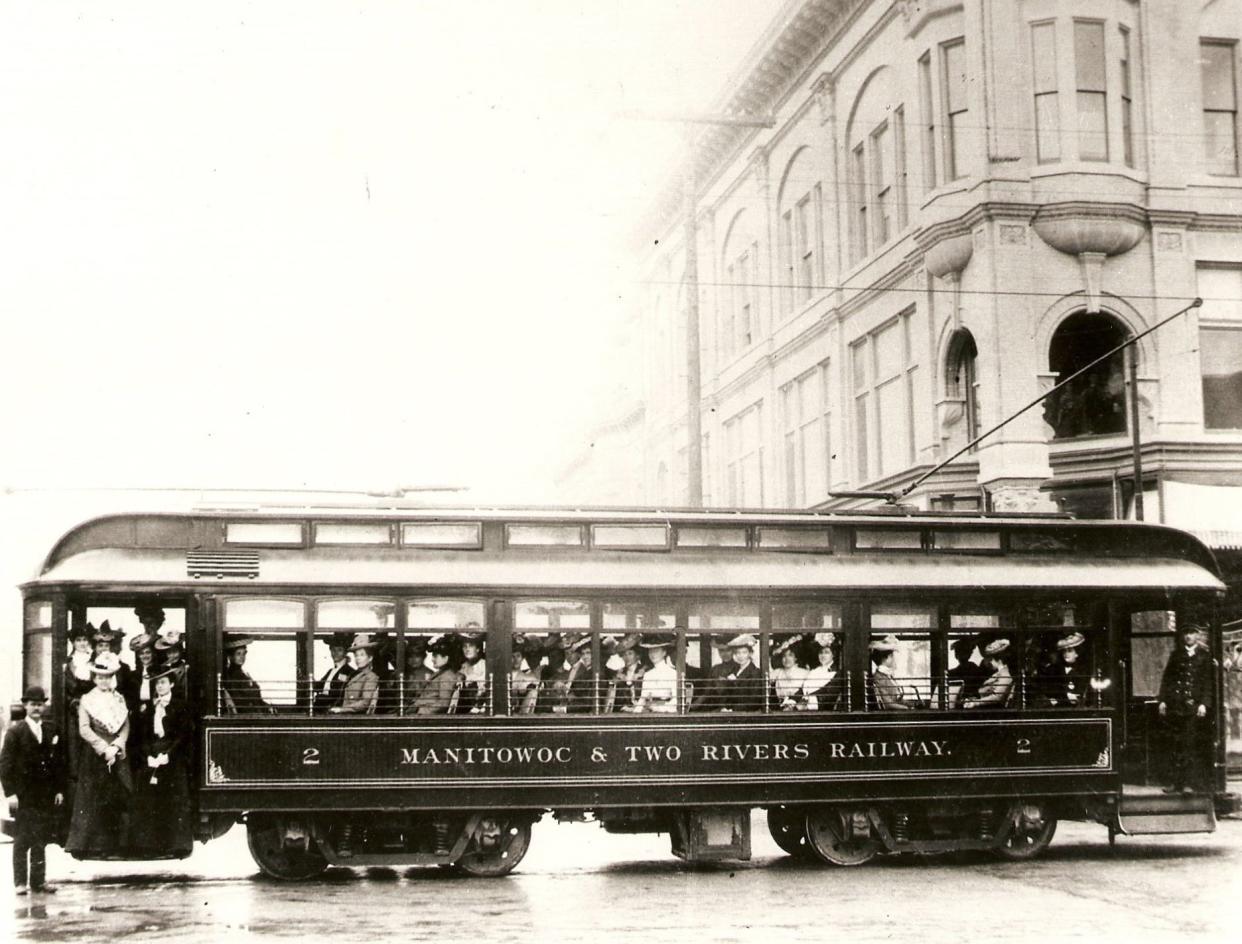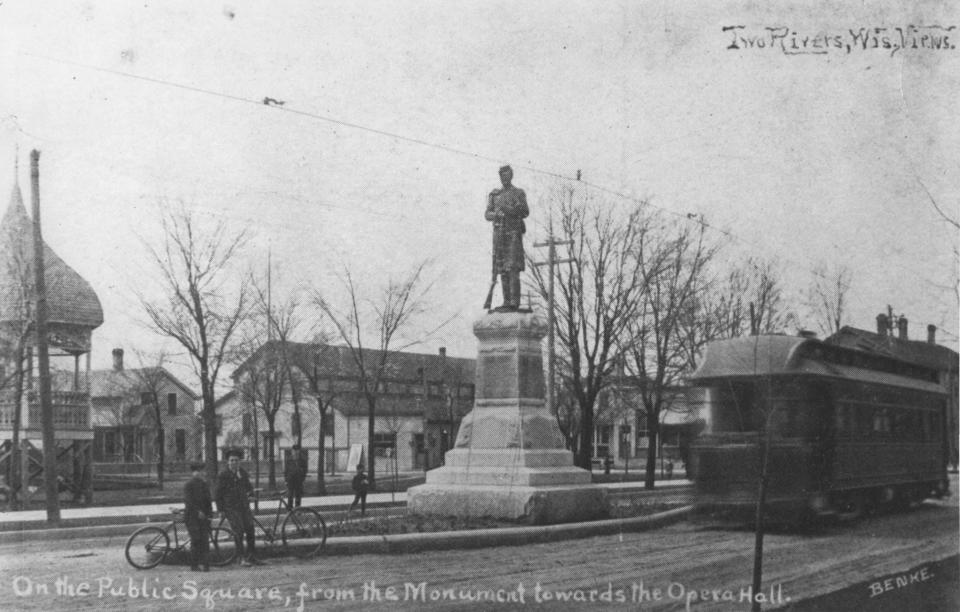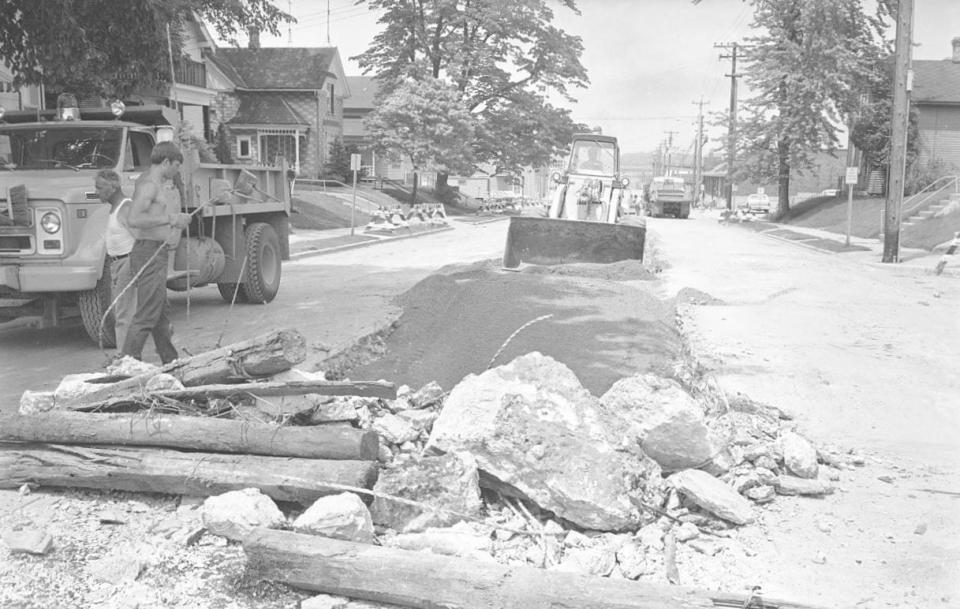Electric streetcar system connected Manitowoc and Two Rivers in the early 1900s, before buses

On Oct. 13, 1900, Thomas Higgins of Neenah secured a 35-year franchise to build an electric streetcar system between Manitowoc and Two Rivers with possible later extensions to Kewaunee and other northern points.
By the spring of 1901, Higgins, manager and owner of the Manitowoc & Northern Traction Company, had moved to Manitowoc, completed a survey of the line, and ordered steel rails, which were delivered in June. He also made arrangements for the shipment of cars from the St. Louis Car Co.
In April 1902, two small city streetcars were unloaded at the C&NW depot in Manitowoc. In appearance, the cars (29 feet, 4 inches long with 28 seats) were “handsome in design,” painted “a pretty red color” and numbered “3” and “4.”
Other city streetcars and larger interurban cars (42 feet, 4 inches long with 44 seats) for the Two Rivers run arrived later.
The 7.3-mile route went from the C&NW depot at 13th and Franklin streets to Washington Street, then north on Eighth Street across the bridge to Cleveland Avenue, east to the Two Rivers Road and north along the lakeshore.
Wreck of the 'Snowflake Unlimited': Wreck of steam locomotive near Two Rivers in 1927 injured 4 and caused considerable damage
At Two Rivers, the line went down Roosevelt Avenue to 12th Street, then Madison and 14th streets to the Monroe Street bridge, which is no longer there today.
After crossing the bridge, the line went east on 16th Street, then north on Washington Street (around the Civil War Soldiers Monument erected in 1900 in the middle of the street) to 22nd Street.

A spur line, built on the north side of Manitowoc, ran west from Eighth Street on Huron and 11th streets to New York Avenue, as far as the city’s western limits.
On Thursday, May 1, 1902, the first electric streetcar began running between Manitowoc and Two Rivers, drawing crowds, loud cheers and toasts in both cities. Several thousand people patronized the M&N lines the following weekend to enjoy the novelty. The Manitowoc Daily Herald reported cars were overcrowded and “it was impossible for the company to accommodate the large number of people who sought transportation.”
Two Rivers Soldiers Monument: Soldiers Monument in Two Rivers has stood as a tribute to Civil War Union soldiers since 1900. Here's its story.
In September 1902, thousands of people paid the 5-cent fare to ride streetcars to attend the Manitowoc County Fair at the Agricultural Society’s grounds on North 18th Street.
Regular city service ran on a 40-minute headway between the C&NW depot and the end of the cemetery/fairgrounds spur from 7:30 a.m. to 10 p.m. The interurban line also ran on a 40-minute headway from 6 a.m. until 11 p.m. After each day’s run, cars were taken to a carbarn and power plant on Cleveland Avenue, just south of the Little Manitowoc River.
The streetcars and interurban ran year-round. During the winter, a snowplow mounted on the front of a car kept the tracks cleared.
Plans to expand the Manitowoc and Northern line from the C&NW depot to Holy Family Hospital in Manitowoc and from Two Rivers to Mishicot and Kewaunee (hence the "Northern" company name), although greatly desired by citizens, never materialized, except for some survey work and grading for the line to Mishicot.


In 1916, Higgins sold his interests and in 1922 the M. & N. T. Co. was merged into the Wisconsin Public Service Corp. By 1925, the traction line was deteriorating and a 10-mph restriction was placed on the Little Manitowoc trestle bridge because the span was badly rotted.
Finally, on Saturday, May 14, 1927, the M&N line ceased operations because of postwar inflation, high maintenance and repair costs, and the introduction of motorized buses which replaced the street and interurban cars.
Next time you are walking or biking on the Maritime Trail or driving along Memorial Drive imagine, the lakeshore 100 years ago as passengers rode electric streetcars between Manitowoc and Two Rivers.
Bob Fay is a historian and former executive director of the Manitowoc County Historical Society.
This article originally appeared on Manitowoc Herald Times Reporter: Manitowoc and Two Rivers were connected by electric streetcar system

